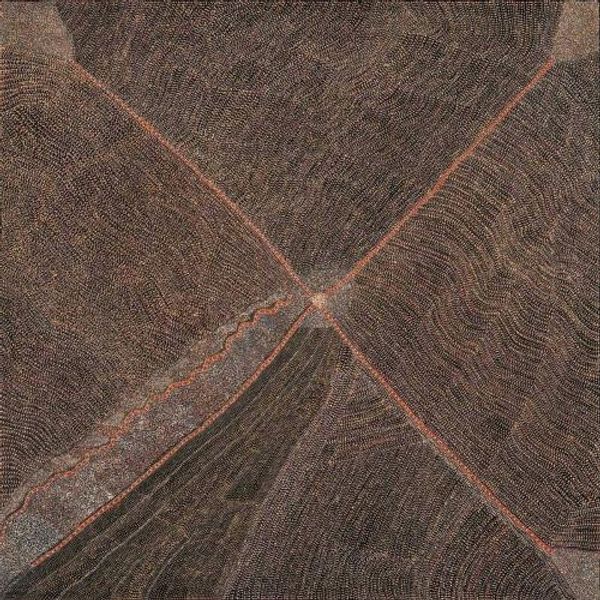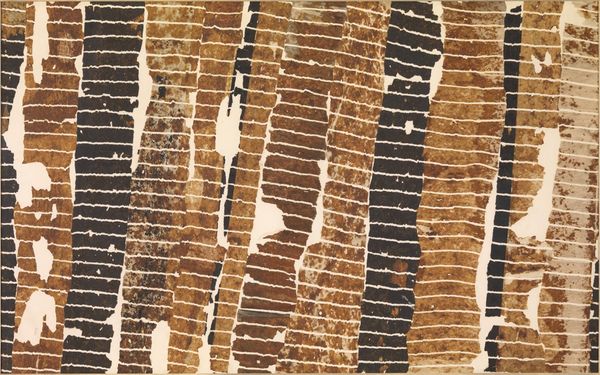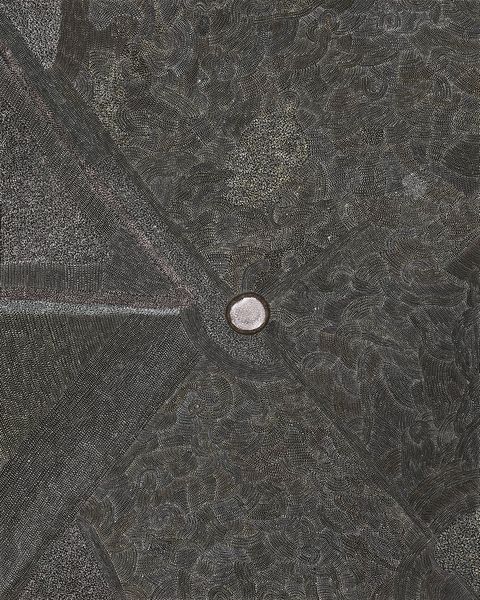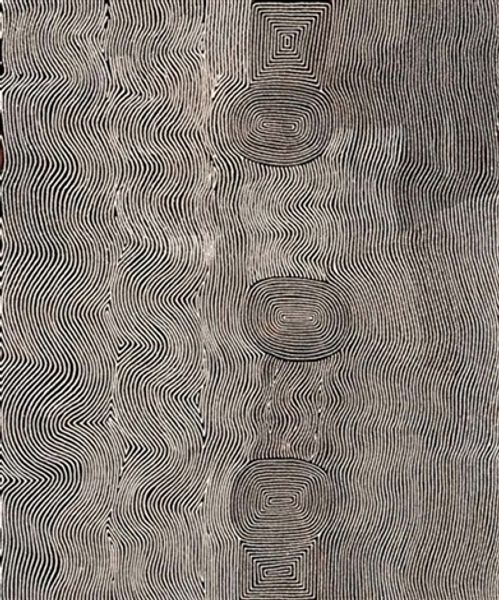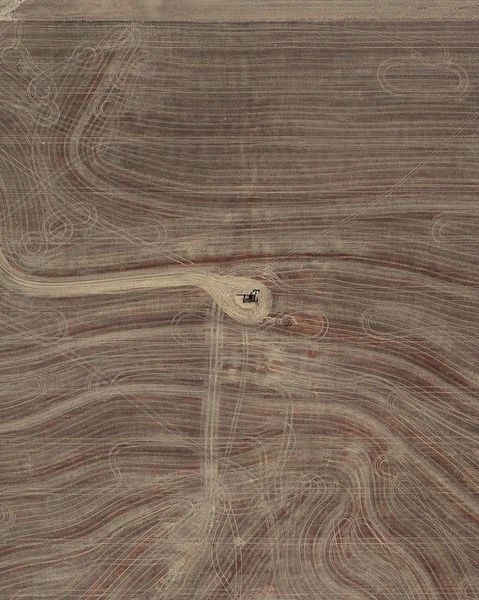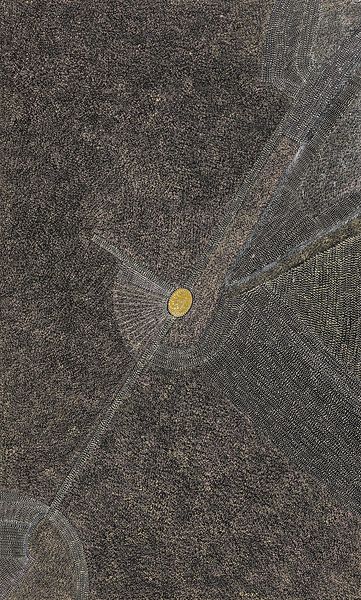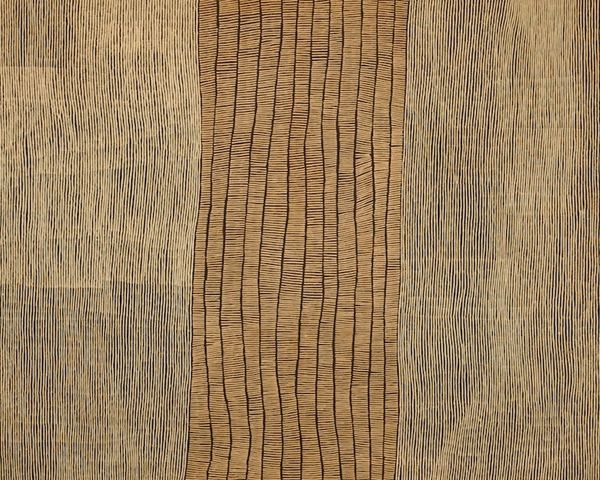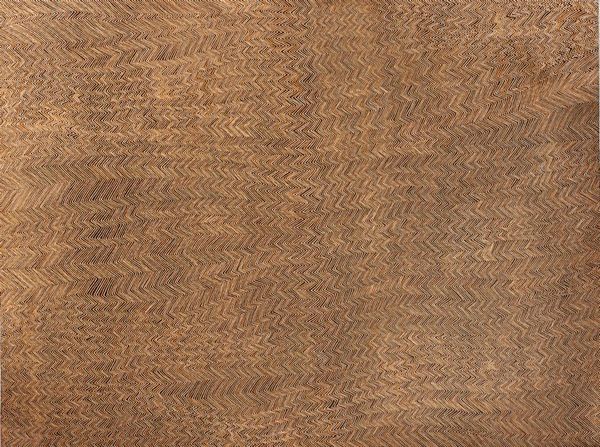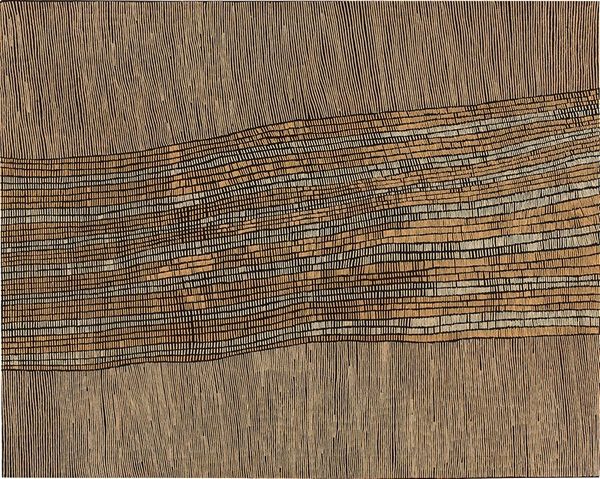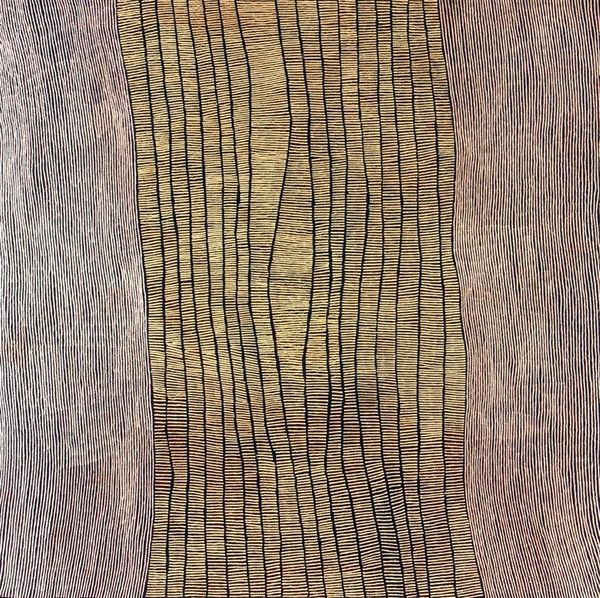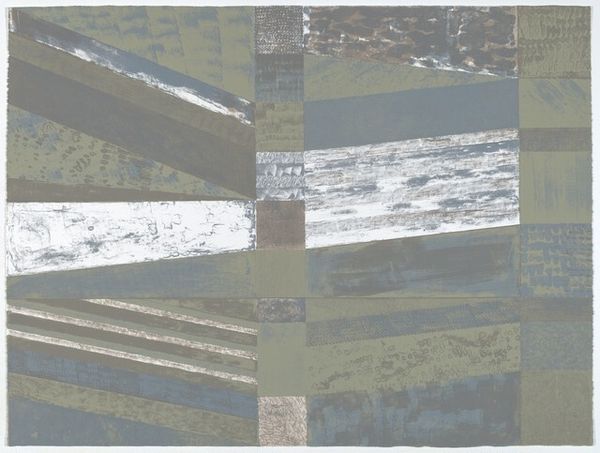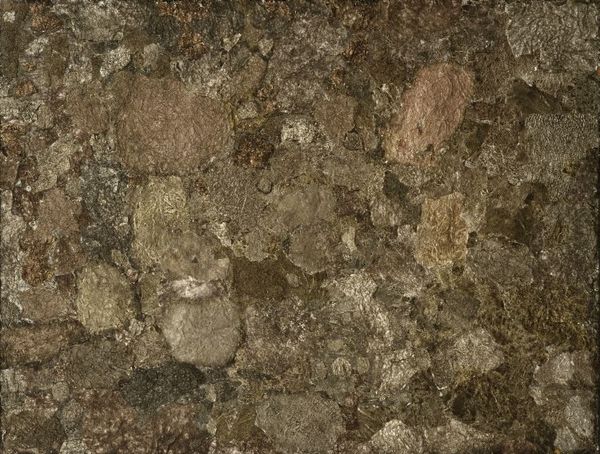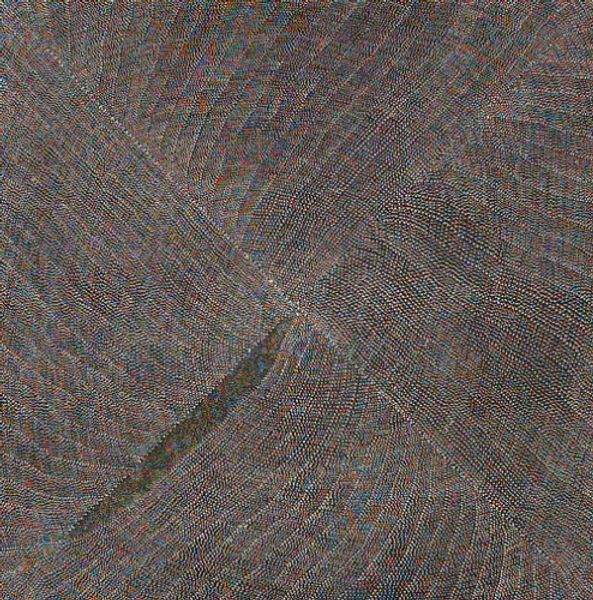
painting
#
contemporary
#
painting
#
abstraction
Dimensions: 131 x 97 cm
Copyright: Kathleen Petyarre,Fair Use
Curator: Here we have Kathleen Petyarre’s “Arkerrthe Awelye, Mountain Devil Lizard Dreaming,” painted in 1998 using acrylic. What's your immediate take on it? Editor: I’m struck by the sheer density of it. It feels like looking at the parched surface of cracked earth or maybe even woven bark. There’s a sense of texture even though it's a painting. Curator: Absolutely, the material itself seems key. The acrylic likely allowed Petyarre to build up these incredible layers, mimicking the landscape itself. But consider also the historical context of using acrylic. How does it distance itself from traditional Indigenous materials, or perhaps, align with new economic realities for Indigenous artists in the late 20th century? Editor: That’s interesting. It prompts me to think about the role of these paintings in broader dialogues surrounding Indigenous land rights and cultural preservation. Dreamings, as narratives and maps, hold deep political and spiritual significance. How does exhibiting this piece shape that discourse? Curator: Precisely. The institutional display normalizes and legitimizes Aboriginal art as ‘high art’ while simultaneously mediating its cultural message for Western audiences. How much is truly communicated, and who benefits from its commodification? This geometric pattern and its presence here are inseparable from a long history of museums presenting other cultures’ stories. Editor: Looking at the repeated markings, I see rhythm, almost like a score. What might have influenced Petyarre's choices of line and colour? Curator: The lines reflect traditional Aboriginal dot painting techniques, transformed here through the unique style of Petyarre, where they speak to the stories, and, essentially, map her Country. However, notice the neutral color palette? That directs attention towards her methods; toward repetitive hand gestures used, bringing visibility to that labor. The Dreaming isn’t just represented—it is physically produced. Editor: Yes, and that production carries immense social and cultural weight. Food for thought. Curator: Indeed, art offers rich perspectives on the intersections between creation, narrative, and culture. Editor: Well, thank you for unpacking those important contexts! It's a deeply textured painting, conceptually and visually.
Comments
No comments
Be the first to comment and join the conversation on the ultimate creative platform.
